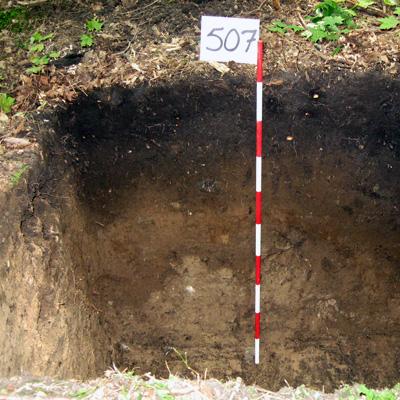Assessment of Repeated Soil Sampling as a Monitoring Tool for Investigating the Effects of Changes in Soil Chemistry

Environmental disturbances such as acidic deposition can alter forest soils, but little data have been collected to document soil change over time. To test the feasibility of repeated soil sampling to monitor soil change, NSRC researchers re-sampled and analyzed soils at 16 locations in the Northeastern United States, Ontario, and Quebec where previous sampling was done 12 to 24 years ago.
Significant changes were detected in all chemical measurements for at least one site and soil horizon (layer in a soil profile or pit). The uppermost organic horizons (Oe, Oa, F and H) showed the most changes and tended to become less acidic over time (decreased exchangeable aluminum concentrations and/or pH). Exceptions included East Bear Brook, Maine, where exchangeable aluminum concentrations increased in the Oa horizon, and pH and exchangeable calcium concentrations decreased. Mineral horizons (A and B, just below the organic horizons) tended to become more acidic (increased exchangeable aluminum concentrations and/or decreased calcium concentrations), although both increases and decreases in pH were observed, and decreased concentrations of exchangeable aluminum were observed in B horizons at most Ontario sites. Some changes in soils, such as decreases in aluminum, were related to decreasing acidic deposition, but some sites did not fit the overall patterns.
Soil re-sampling appears to be a good tool for detecting changes in soil over varying time periods in different forest types with varying soil chemistry and acidic deposition history. Findings showed that recovery of acidified soils had begun at some sites in some horizons, but at other sites, soils continued to acidify during the study period.
